Picture yourself in a lush, vibrant garden, surrounded by the enchanting hues of flowers. Amidst this botanical symphony, one plant stands out with its unparalleled beauty—meet Begonia Fuchsioides.
In my journey as a passionate plant enthusiast, discovering the charm of Begonia Fuchsioides has been like stumbling upon a hidden gem in the world of flora. As I share my insights, let’s delve into the captivating universe of this exquisite plant.
Key Takeaways
- Vibrant Beauty: The Begonia Fuchsioides boasts striking, fuchsia-colored blooms that can effortlessly steal the spotlight in any garden.
- Unique Foliage: Its angelic, heart-shaped leaves add a touch of elegance, making it a standout feature in any collection.
- Low Maintenance Darling: Unlike some finicky plants, Begonia Fuchsioides is surprisingly easy to care for, making it an ideal choice for both novice and experienced gardeners.
- Thrives Indoors and Outdoors: Whether adorning your windowsill or enhancing your garden bed, this begonia adapts seamlessly to various environments.
- Year-Round Appeal: With its evergreen disposition, you can revel in the beauty of Begonia Fuchsioides throughout the seasons, adding a splash of color to your surroundings.
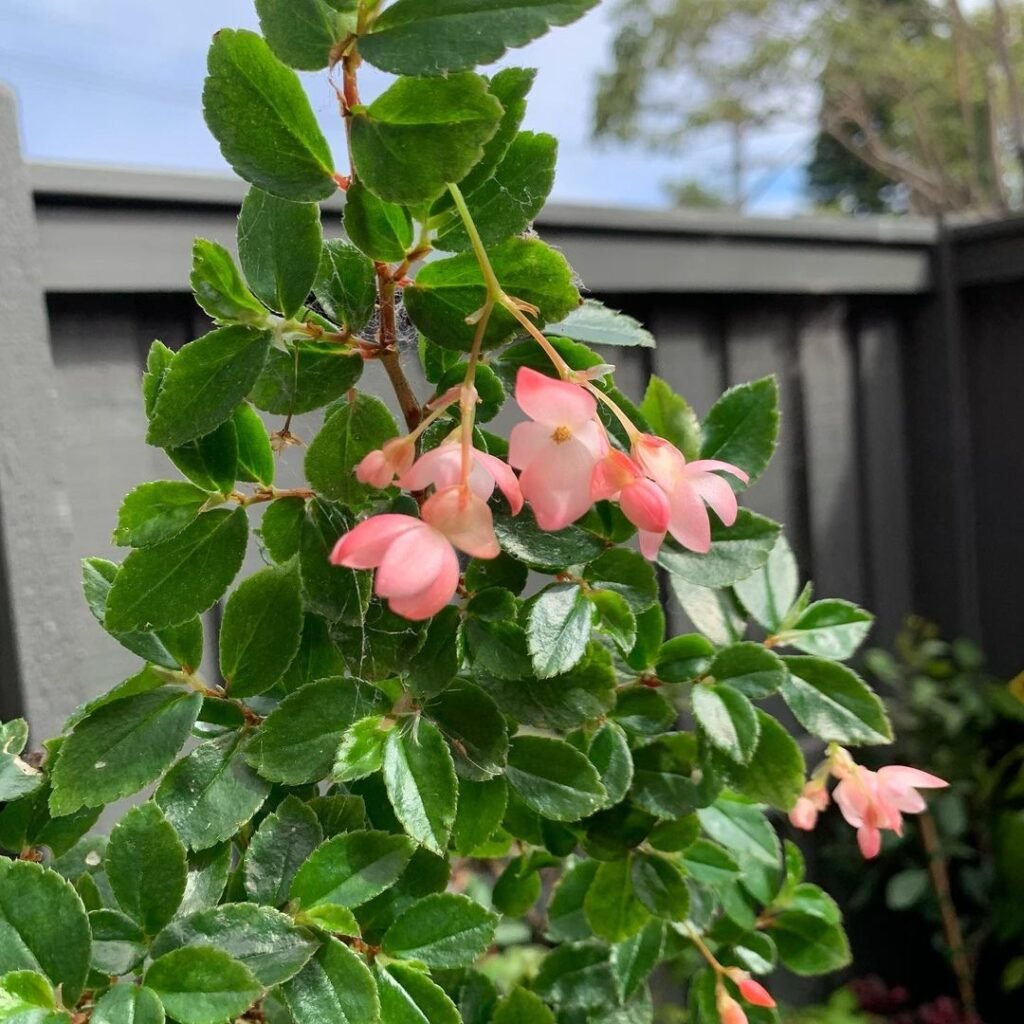
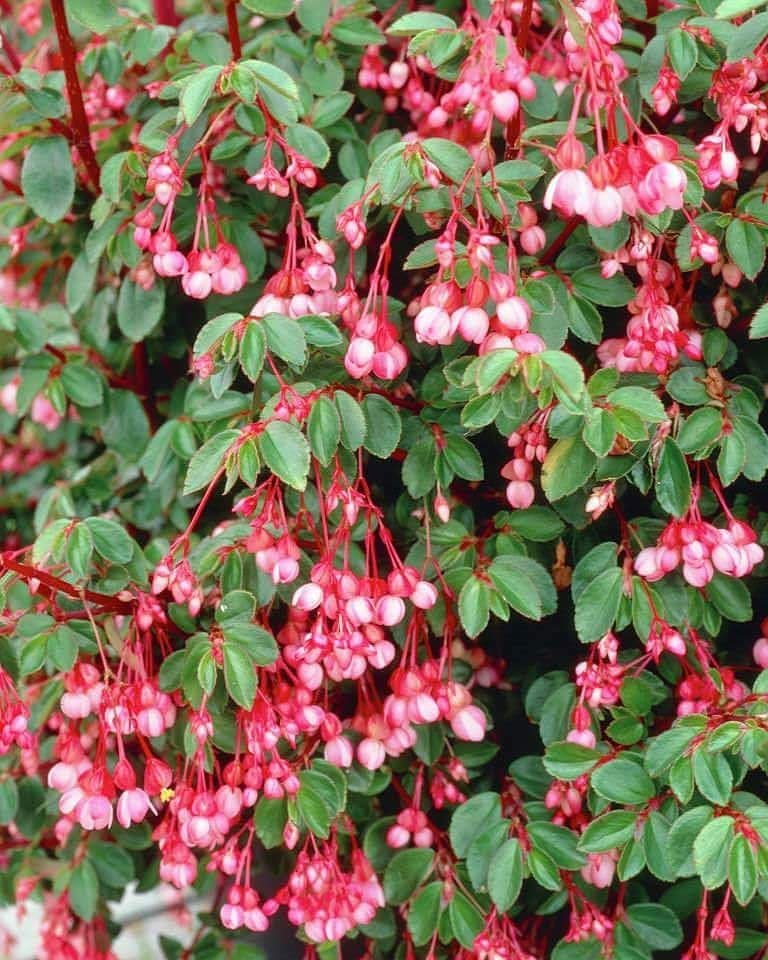

🌱 Care Guide Overview
| Care Aspect | Recommendations |
|---|---|
| 💦 Watering | Keep the soil consistently moist but not waterlogged. Ensure proper drainage to prevent root rot. |
| ☀️ Lighting | Provide bright, indirect light for optimum growth. Avoid prolonged exposure to harsh sunlight. |
| 🌱 Soil and Fertilizing | Plant in a well-draining potting mix. Fertilize monthly during the growing season with a balanced liquid fertilizer. |
| 💧 Humidity and Temperature | Maintain moderate humidity levels. Keep temperatures between 65°F to 75°F (18°C to 24°C). |
| ✂️ Pruning and Shaping Tips | Trim leggy stems to encourage bushier growth. Remove spent flowers regularly for continuous blooming. |
| 🌱 Propagation Tips | Propagate through stem cuttings. Ensure the cuttings have at least two nodes for successful propagation. |
🌸 Appearance of Begonia Fuchsioides
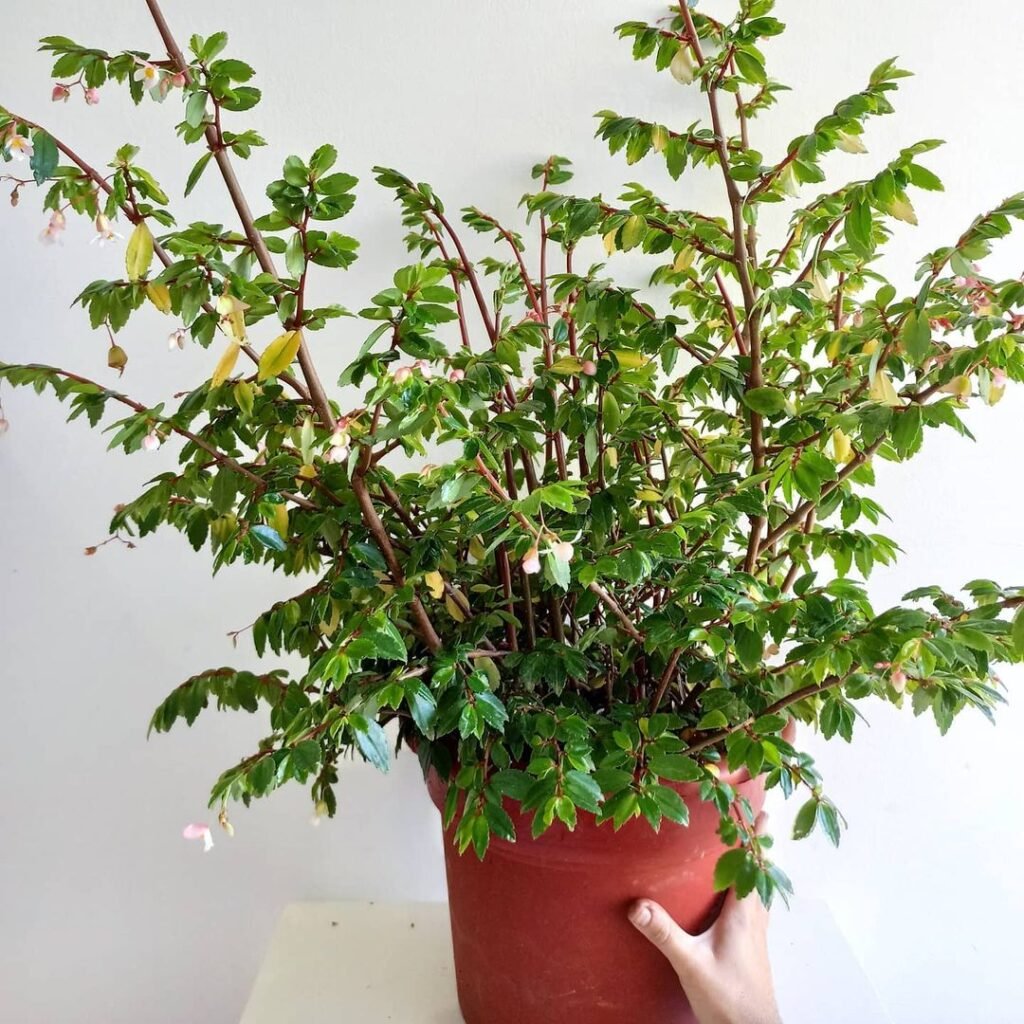
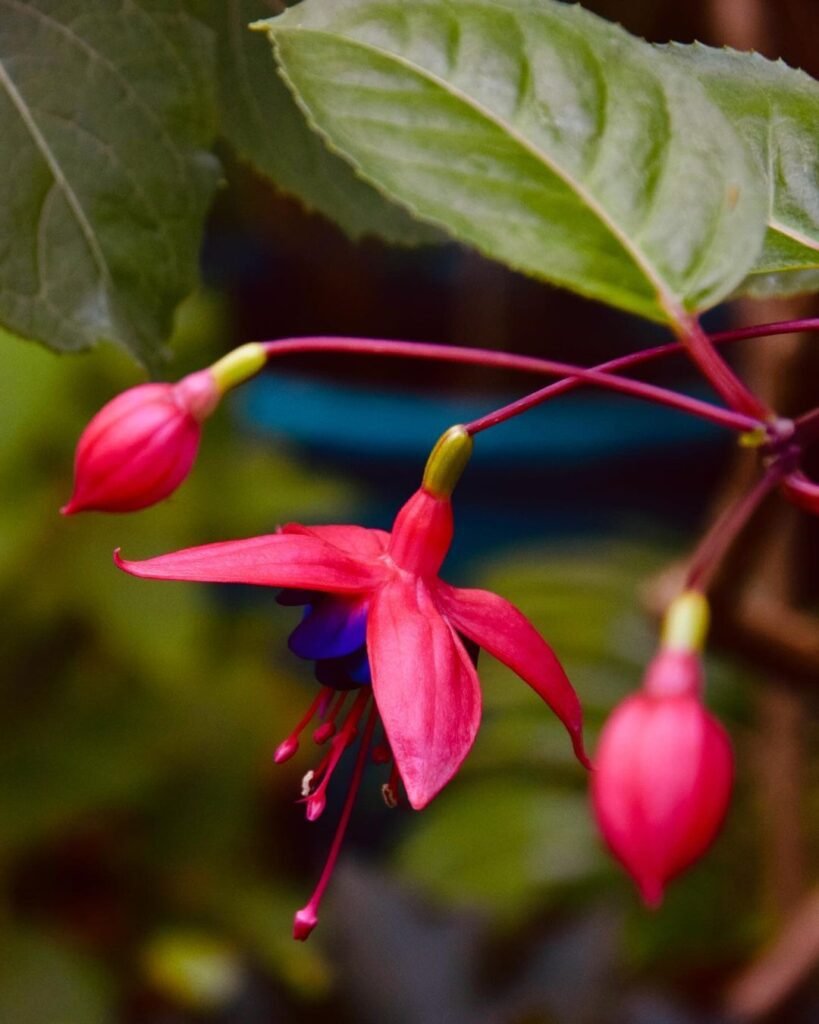
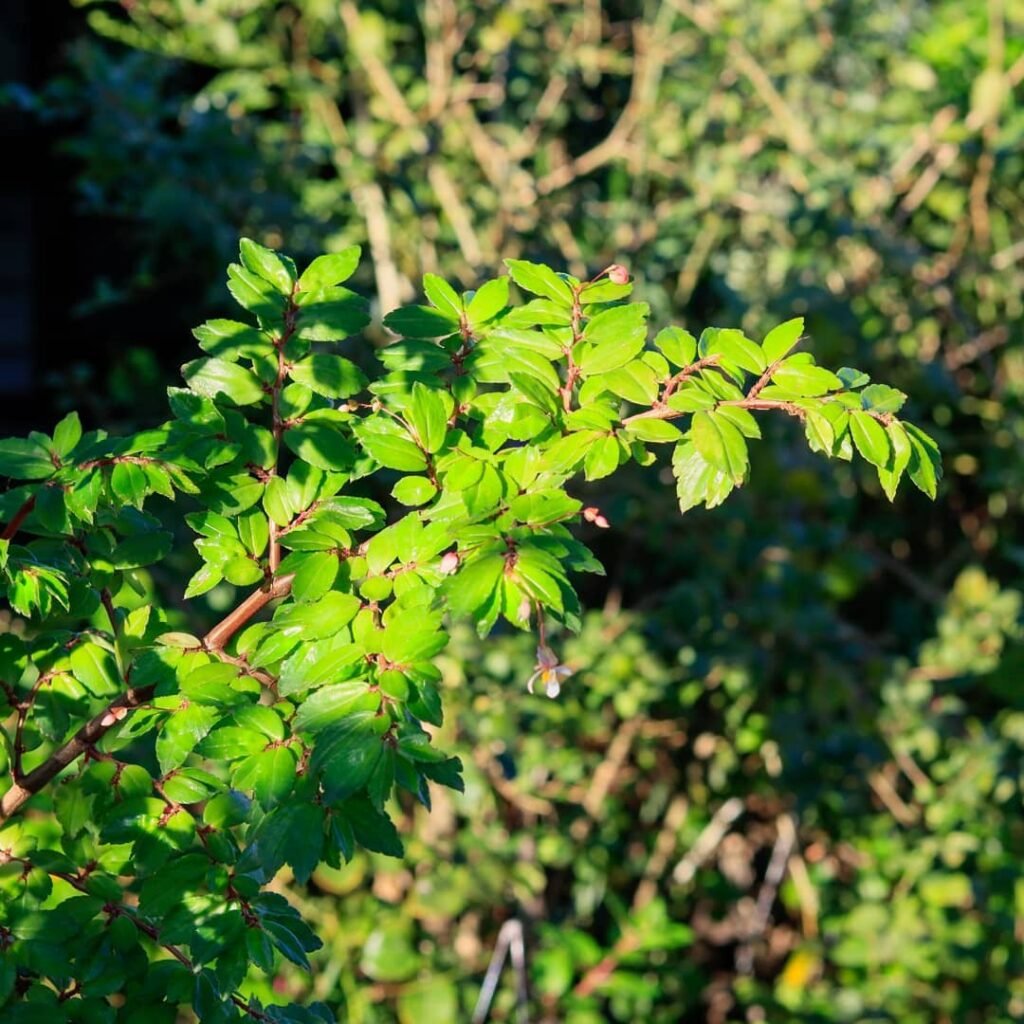
The Begonia Fuchsioides is a botanical masterpiece, captivating all who lay eyes upon it. Its defining feature lies in the vibrant, pendulous clusters of fuchsia-colored blossoms that dangle delicately like nature’s own jewels. Each bloom, a mesmerizing display of intricate petals, forms a harmonious contrast against the lush, heart-shaped leaves that gracefully cradle the floral spectacle.
In addition to its captivating flowers, the foliage of Begonia Fuchsioides is a work of art in itself. The leaves, adorned with a glossy texture, showcase a rich, deep green hue that adds a touch of sophistication to any setting. The plant’s compact stature further enhances its allure, making it an ideal choice for both indoor and outdoor spaces, where its beguiling appearance can be admired and appreciated.
Not the plant for you? Check out my full list of 78 Types of Begonia!
🌱 How to Grow
Embarking on the journey of cultivating a thriving Begonia Fuchsioides involves a nuanced understanding of its unique requirements. Delving into the essential aspects of cultivation, let’s unravel the secrets to successfully nurturing this botanical gem:
💦 Watering
Begonia Fuchsioides is a plant that appreciates moderation when it comes to watering. Strive for consistently moist soil, avoiding extremes that could jeopardize its well-being. The importance of proper drainage cannot be overstated; it serves as a shield against the potential pitfalls of waterlogged conditions.
One effective way to gauge watering needs is the finger test: insert your finger into the soil up to the first knuckle and water when it feels slightly dry. This method ensures a delicate balance, keeping the roots happy and healthy.
☀️ Lighting
Lighting conditions are a crucial determinant of Begonia Fuchsioides‘ prosperity. Optimal growth occurs in bright, indirect light, replicating the dappled sunshine found in its natural habitat. However, exercise caution to shield the plant from prolonged exposure to intense sunlight, which can scorch its delicate foliage.
If natural light is scarce, consider introducing fluorescent lights to maintain a harmonious balance between brightness and shade. This strategic approach to lighting creates an environment where your begonia can flourish, showcasing its vibrant beauty to the fullest.
🌱 Soil and Fertilizing
Selecting the right soil for your Begonia Fuchsioides is akin to providing a comfortable home for a cherished guest. Opt for a well-draining potting mix that allows water to escape, preventing the roots from succumbing to waterlogged conditions. A crucial aspect of this mix is its ability to retain enough moisture without becoming overly saturated.
In terms of fertilizing, consider a balanced liquid fertilizer applied at a gentle pace, approximately monthly during the growing season. This periodic boost ensures that your begonia receives the necessary nutrients without the risk of overfeeding, promoting robust growth and a lush display of its distinctive foliage and blossoms. By focusing on the soil’s composition and providing appropriate nourishment, you’re setting the stage for a thriving Begonia Fuchsioides.
💧 Humidity and Temperature
Creating an environment that mirrors the natural habitat of Begonia Fuchsioides is key to fostering its well-being. Moderate humidity levels provide a comforting atmosphere, reminiscent of the plant’s native surroundings. Consider incorporating humidity trays or grouping plants to enhance moisture in the air.
Maintaining temperatures between 65°F to 75°F (18°C to 24°C) ensures that your begonia remains within its comfort zone. This careful balance between humidity and temperature sets the stage for a content and thriving plant, allowing your Begonia Fuchsioides to radiate its vibrant charm throughout the seasons.
🌿 Best Companions
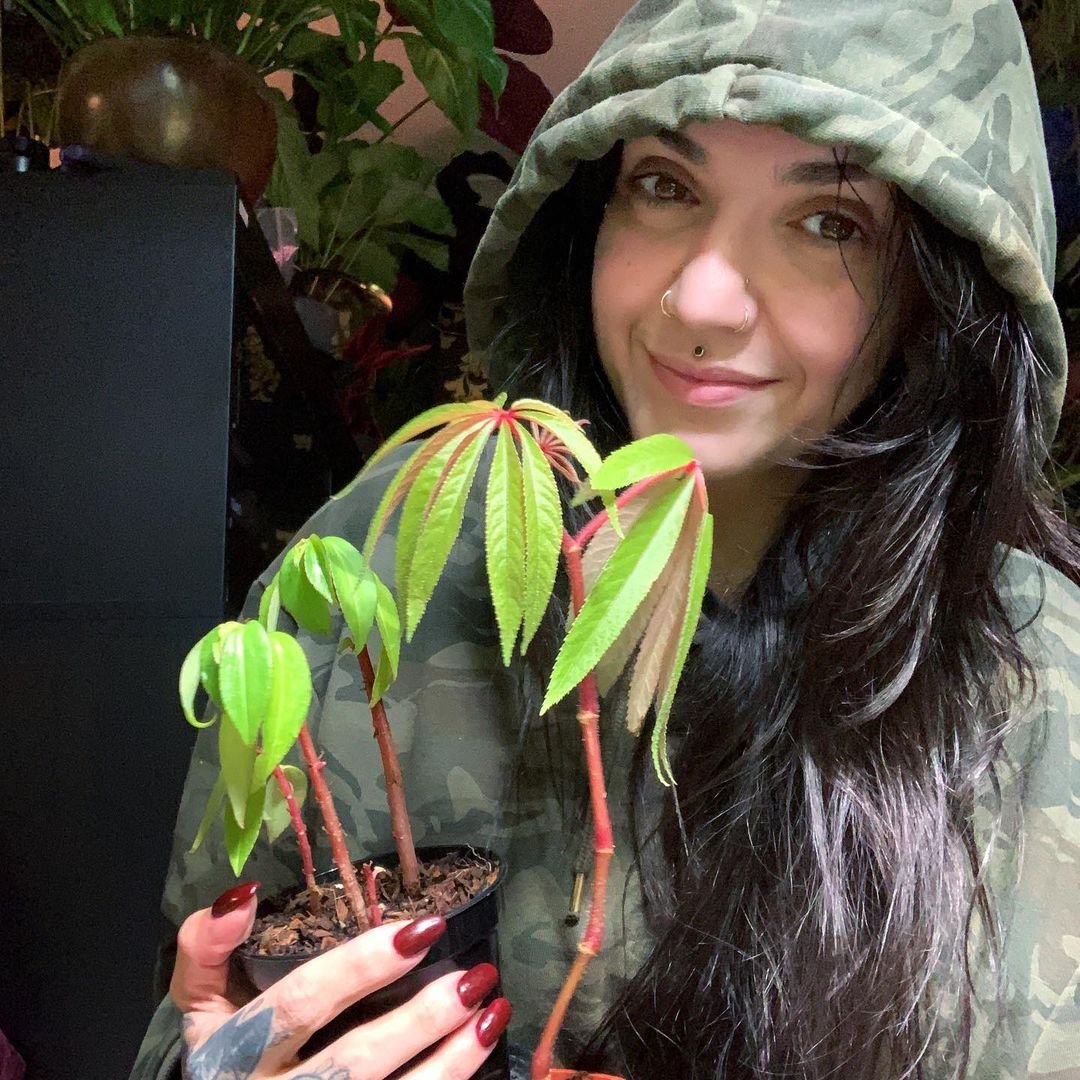
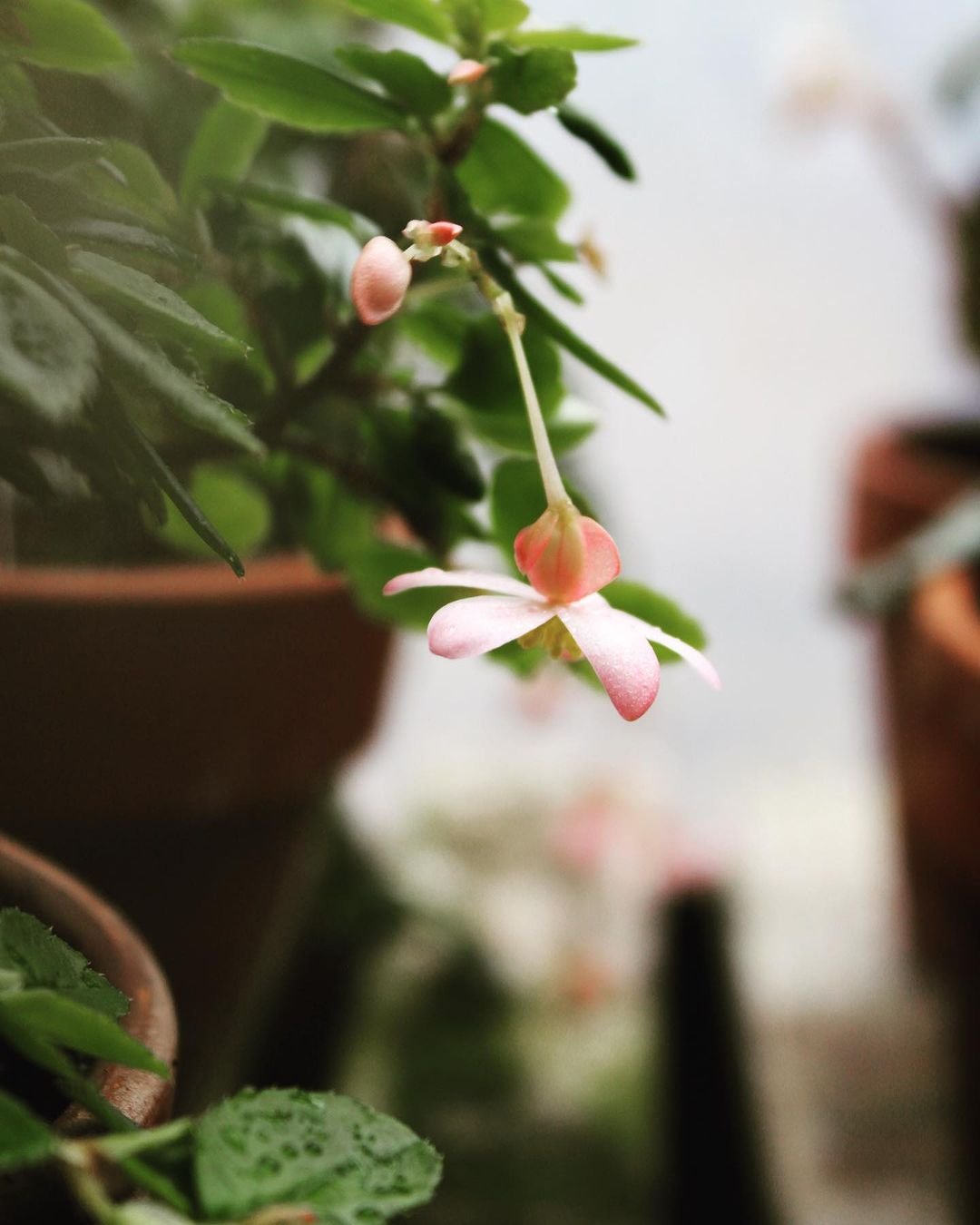

Enhancing the allure of your garden involves more than just the solitary beauty of Begonia Fuchsioides. Consider exploring the world of companion planting, a practice that goes beyond aesthetics and introduces a synergy between plants, fostering a harmonious and thriving environment.
🌸 Perfect Plant Partners
Diversify your garden canvas by strategically selecting companions that not only complement but also contribute to the well-being of your Begonia Fuchsioides. Here are a few noteworthy companions to consider:
| Plant | Benefits |
|---|---|
| Ferns | Besides offering a graceful visual backdrop, ferns provide essential shade for the begonia, shielding it from harsh sunlight. |
| Heuchera | With its varied foliage colors, Heuchera creates a stunning contrast, amplifying the overall aesthetic appeal of the garden bed. |
| Coleus | Sharing similar environmental preferences, Coleus introduces a vibrant burst of color, creating a dynamic and eye-catching landscape. |
| Hostas | Known for their diverse leaf textures, hostas add an interesting dimension to the garden, enriching the visual tapestry alongside Begonia Fuchsioides. |
Experimenting with these plant partners allows you to craft a multi-dimensional garden, where each plant not only showcases its individual charm but also collaborates to create a cohesive and flourishing outdoor space.
🍃 Seasonal Transitions
Navigating the ebb and flow of seasons is a dynamic aspect of caring for your cherished Begonia Fuchsioides. As the climate undergoes its transformative dance, understanding how to tailor your care routine is pivotal to sustaining the health and vibrancy of this botanical wonder.
🌦️ Transitioning Through Seasons
Each season brings its own set of challenges and opportunities for your Begonia Fuchsioides. During the warmer months, capitalize on the begonia’s love for bright, indirect light by placing it in an optimal location where it can bask in the sun’s gentle rays. However, as the days grow shorter and cooler, consider relocating your begonia to an area with slightly reduced light exposure. Shield it from potential drafts and extreme temperature fluctuations, allowing it to acclimate gradually to the changing environment. This strategic approach minimizes stress on the plant, ensuring a smoother transition between seasons and promoting overall well-being.
💦 Winter Watering Wisdom
Winter signals a shift not only in temperature but also in your begonia’s watering needs. While maintaining a consistently moist soil is a year-round necessity, the colder months demand a nuanced approach. As growth naturally slows down, adjust your watering frequency, allowing the soil to dry out slightly between waterings. This prevents overwatering, a common pitfall during winter, as reduced light and cooler temperatures affect the plant’s overall water intake. By mastering this winter watering wisdom, you provide your Begonia Fuchsioides with the tailored care it requires, ensuring a resilient and thriving plant even in the face of seasonal transitions.
🌼 Propagation

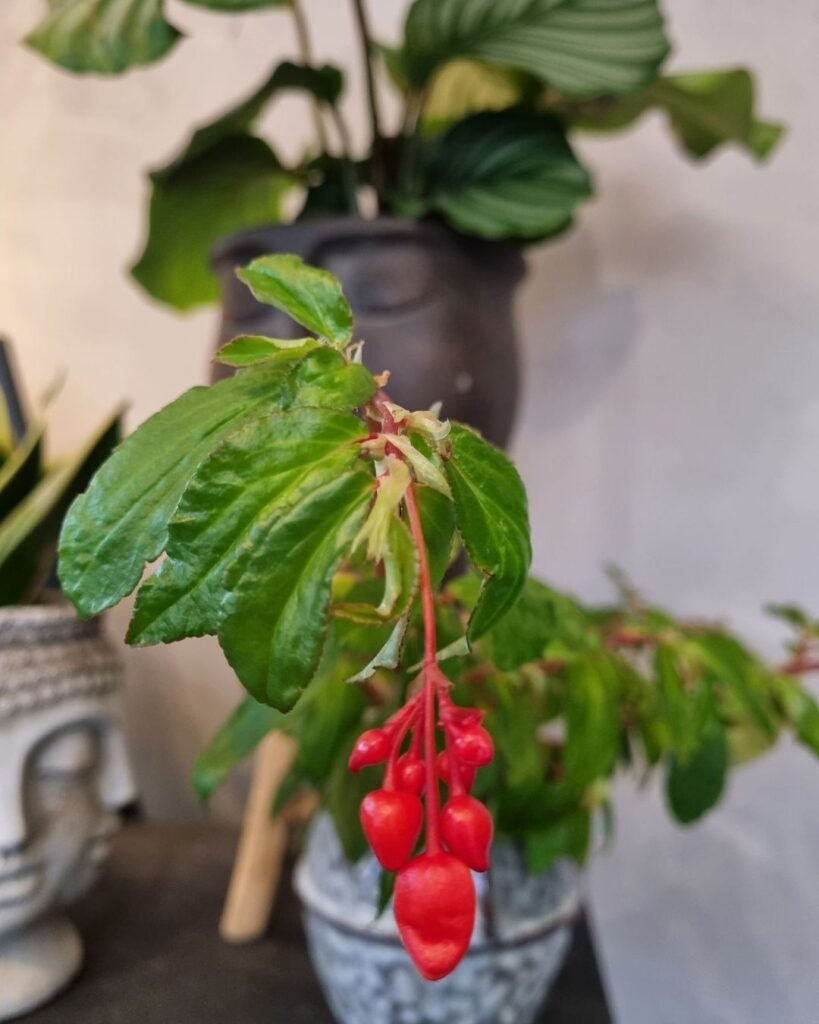
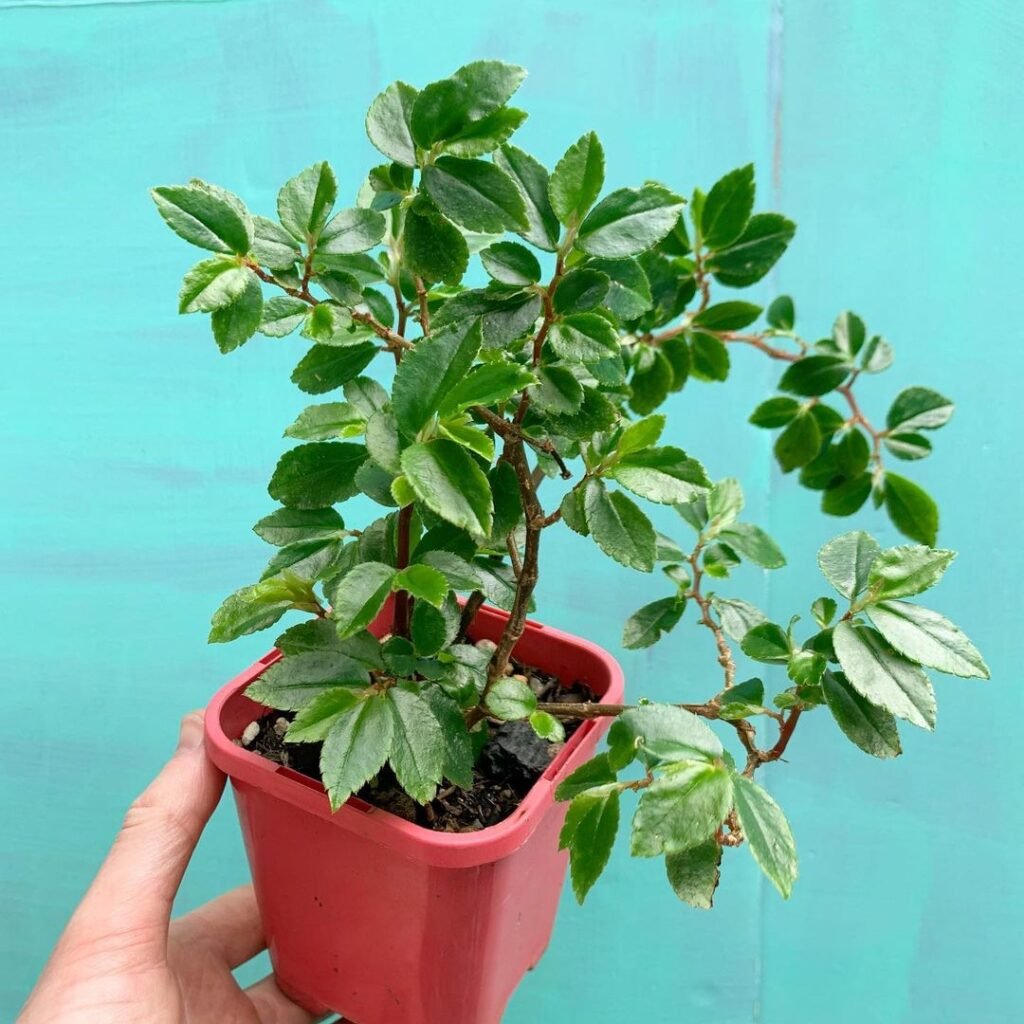
While the allure of Begonia Fuchsioides lies in its captivating blooms, the journey of cultivating this botanical wonder takes a fascinating turn with the art of propagation. Delve into the intricacies of multiplying the beauty of your begonia, creating new generations to adorn your space with vibrant foliage.
🌿 Propagation Methods
Begonia Fuchsioides offers various propagation methods, each with its unique charm. Let’s explore these methods in detail:
Leaf Cuttings
- Select Healthy Leaves: Choose mature, healthy leaves from your begonia, ensuring they are free from diseases or pests.
- Cutting Preparation: Snip the selected leaves at the base, making clean cuts using sterile scissors or pruning shears.
- Planting in Medium: Place the cut leaves in a moist, well-draining medium, such as a mixture of perlite and peat moss.
- Root Development: Keep the medium consistently moist and provide indirect light to encourage root development.
Stem Cuttings
- Choose Healthy Stems: Select non-flowering stems with at least two nodes, ensuring they are free from damage or diseases.
- Cutting Preparation: Trim the selected stems just below a node using sterile scissors or pruning shears.
- Rooting in Soil or Water: You can root the stems either directly in soil or by placing them in water until roots develop.
- Transplanting: Once roots are established, transplant the cuttings into a suitable potting mix.
Division
- Mature Plant Division: Choose a mature begonia with well-established roots.
- Gentle Separation: Carefully separate the plant into sections, ensuring each portion has roots attached.
- Planting Individual Sections: Replant each divided section in its own pot or location, maintaining consistent moisture.
🌱 Best Practices for Success
To ensure successful propagation, consider the following best practices:
- Warm Environment: Maintain a warm environment with temperatures around 70°F (21°C) to encourage root development.
- Indirect Light: Provide indirect light to avoid stressing the cuttings during the propagation process.
- Consistent Moisture: Keep the planting medium or soil consistently moist, preventing dehydration of the developing roots. 1
🏡 Containers and Soil
Creating a conducive environment for your Begonia Fuchsioides starts with thoughtful considerations regarding the choice of containers and soil. Uncover the secrets to optimal potting, ensuring your begonia thrives in its chosen home.
Choosing the Right Container
Selecting an appropriate container for your Begonia Fuchsioides is a crucial step in providing the ideal living space for this botanical beauty. Consider the following factors when choosing a pot:
| Container Material | Pros | Cons |
|---|---|---|
| Terra Cotta | Breathable, preventing waterlogged soil. Aesthetic appeal. | Can absorb moisture, potentially drying out the soil faster. |
| Plastic | Lightweight, retains moisture. Budget-friendly. | May not provide optimal aeration, leading to potential overwatering. |
| Ceramic | Attractive, comes in various designs. | Heavier, and may not have proper drainage holes. |
| Wooden | Natural look, provides good insulation. | Prone to rot if not properly treated. |
Choose a container that aligns with your aesthetic preferences while prioritizing the material that best suits the specific needs of Begonia Fuchsioides.
🏺 Selecting the Ideal Soil Mix
The soil in which your begonia resides plays a pivotal role in its overall health and growth. Crafting an optimal soil mix involves balancing factors like moisture retention and drainage. Consider the following components for a well-rounded potting mix:
| Soil Component | Purpose |
|---|---|
| Potting Soil | Provides a base for nutrient retention. |
| Perlite | Enhances drainage, preventing waterlogged conditions. |
| Peat Moss | Aids in moisture retention while maintaining good aeration. |
| Bark | Adds structure to the mix, promoting root health. |
Creating a well-draining yet moisture-retaining soil mix allows your Begonia Fuchsioides to thrive, striking the perfect balance for a flourishing plant. Tailoring the potting environment to meet the specific needs of your begonia contributes to its overall well-being and longevity in your care.
🌿 Conclusion
In the journey of cultivating Begonia Fuchsioides, we’ve explored the intricacies of caring for this botanical gem, from optimal growth conditions to seasonal transitions and propagation techniques. Understanding the unique needs of your begonia allows you to create an environment where it can thrive, gracing your space with its vibrant foliage and blooms.
As you continue your begonia care adventure, remember the importance of balance—balancing light and water, adjusting to seasonal changes, and embracing the art of propagation. By incorporating thoughtful practices and experimenting with companion planting, you not only nurture your begonia but also cultivate a deeper connection with the world of plants.
May your journey with Begonia Fuchsioides be filled with joy, discovery, and the ever-growing beauty of this remarkable botanical companion.
🌿 FAQs
Can Begonia Fuchsioides be grown indoors?
Yes, Begonia Fuchsioides can thrive indoors, provided it receives bright, indirect light and is planted in a well-draining potting mix. Indoor environments can offer a controlled climate, allowing you to enjoy the beauty of this begonia year-round.
How often should I fertilize Begonia Fuchsioides?
Fertilize your begonia monthly during the growing season with a balanced liquid fertilizer. This provides the necessary nutrients for optimal growth without the risk of overfeeding.
Can I propagate Begonia Fuchsioides in water?
Yes, Begonia Fuchsioides can be propagated in water. Take stem cuttings, place them in water until roots develop, and then transplant them into soil for continued growth.
Is pruning necessary for Begonia Fuchsioides?
Pruning can benefit your begonia by encouraging bushier growth. Trim leggy stems and remove spent flowers regularly to promote continuous blooming and maintain an attractive appearance.

Writer/Green Thumb/Explorer – Rooted deep in the rich soils of Devon, I’ve cultivated a vast expertise in plant care, helping greenery thrive in homes across the UK. When I’m not crafting detailed plant care guides, I’m journeying through the lush landscapes of the West Country, unearthing nature’s secrets and sharing them with fellow plant enthusiasts. Every leaf has a story, and I’m here to tell it.





